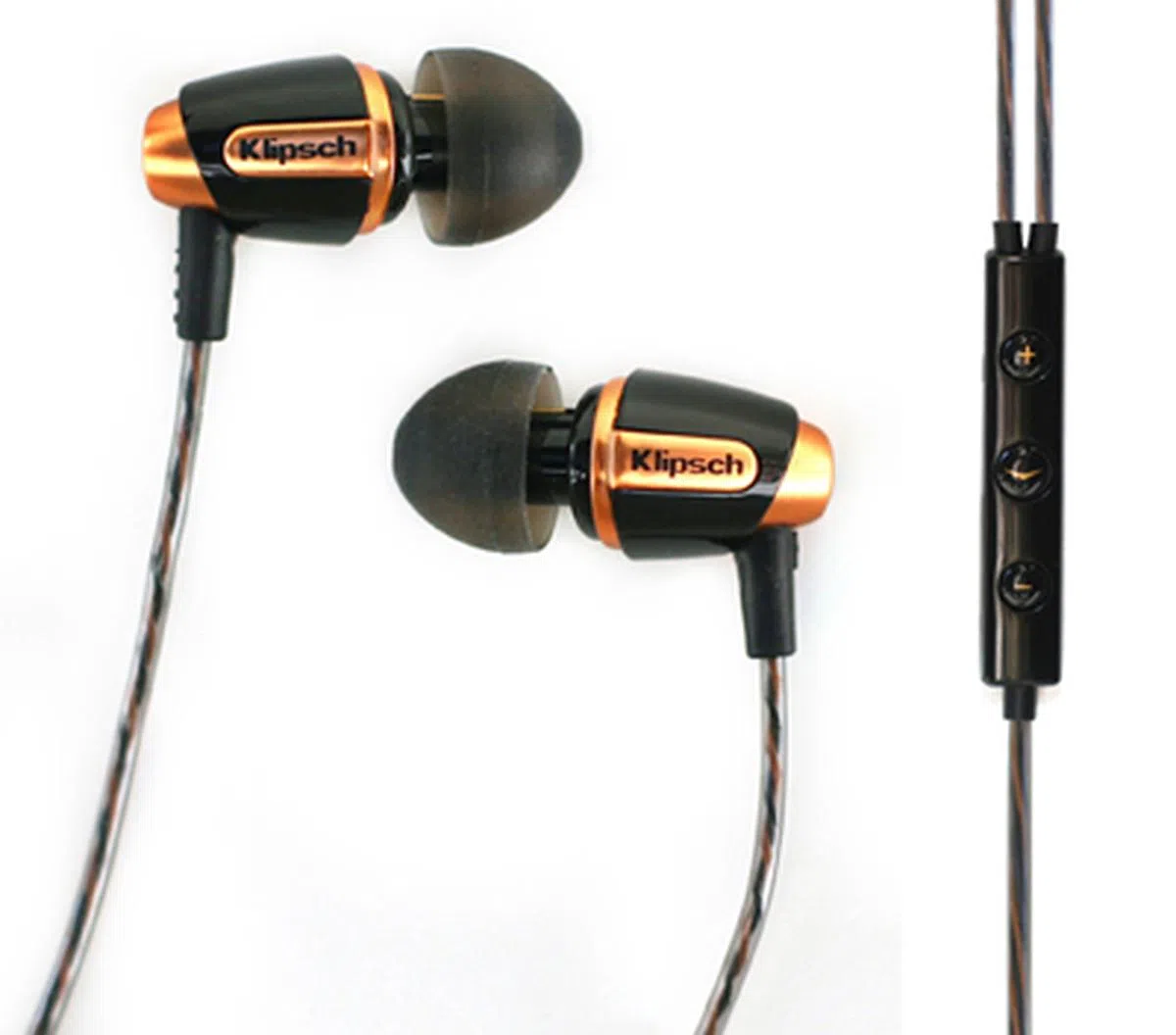Klipsch Reference S4i vs. Sony XBA-1iP Earphones - Balanced Armature vs. Dynamic Drivers
A good pair of earphones is essential in this day and age. We take a look at the two main competing technologies, Balanced Armature and Dynamic Drivers, and see what they offer to those looking for a good pair of entry-level earphones.
The Importance of Earphones
The portability and convenience offered by earphones have made them almost indispensible for music lovers and are one of the most used audio accessories of our times. From the introduction of Sony’s Walkman, all the way through to the iPod becoming a part of popular culture and the smartphone placing a music player in every person’s pocket, a good pair of earphones has become an essential requirement.

The trusty earphone is an essential companion for music lovers in today's day and age.
Headphones, especially the around-the-ear type, have been making a comeback in great part due to products such as Monster’s Beats by Dre and their aura of trendiness. At the same time over-ear headphones seem to be coming in vogue as well. But the humble earphone still reigns supreme as the preferred portable audio accomplice for a user’s listening.

Balanced Armature and Dynamic Drivers are the two primary competing earphone technologies, represented here by Sony and Klipsch earphones respectively.
The major challenge in designing a good set of earphones lies in the fact that there exists a direct trade-off between size and performance. Obviously larger drivers and cabinets will result in better sound quality. But at the same time, there is an upper limit to the size earphones can achieve due to the ergonomic constraints imposed by the human form. Manufacturers tread this line every time they create a new product and they have two main technologies to choose from in the form of Dynamic or Balanced Armature driver technology. While the former is undoubtedly the more prevalent option, you can find Balanced Armature headphones from manufacturers such as Sony and Westone in the market if you look for them.
Technicalities
Both technologies differ in the way they produce sound. But before this difference can be illustrated, a refresher physics course and a basic understanding of the innards of earphones is required. If you remember your science from 5th grade, you will recall that sound is a longitudinal wave comprising of pressurized and de-pressurized regions of air. Earphones replicate this phenomenon with the help of a diaphragm, which is usually a stretched sheet of cellulose or polymer.
The diaphragm however has to be manipulated and moved. Dynamic drivers achieve this with the help of a moving voice coil. Balanced armature however, as the name suggests has a metallic armature suspended between magnets which moves instead, with the voice coil being stationary.
As is the case with competing technologies, both have their pros and cons. Balanced Armature 'drivers' have greater sensitivity and allow for smaller size. But on the flipside it means that they struggle with low frequency performance. Obviously, the reverse is true for Dynamic Drivers. A visual version of this explanation can be seen in an our earlier article introducing Sony's earphones with Balanced Armature driver technology.
But how do these technologies fare in actual implementation? That's what this article is all about as we pit two similarly priced products but using different driver technologies. Read on for our findings.
Hear The Difference
We decided to pit the two technologies head to head and present you the findings in this feature article. Representing Balanced Armature technology, we have the Sony XBA-1iP (first introduced here and here) while the Dynamic driver contender is the Klipsch Reference S4i. In no way do we suggest that these two products are the best from their respective categories, bu they were selected based on their ease of availability at the time of writing, are similarly priced and have comparable hardware. It is important to note that the Sony XBA-1iP has a single Balanced Armature unit tasked with providing the full range of sound.

Balanced Armature and Dynamic Driver representatives have been chosen. Let the listening tests commence.
Both models are compatible with iPhones and Apple products. We chose to use an iPod Classic 160GB as the player of choice because we personally have greater faith in its amplification prowess when compared to its cellular cousin. Before going on to the individual performances of the two earphones, it would be prudent to consider an overview of both contenders and the hardware they pack.
Klipsch Reference S4i
The Klipsch Reference S4i includes 8.5mm full range drivers which are responsible for pumping out the sound. Earbuds are slightly tilted to provide a good deal of noise isolation. The in-line control pod has three buttons to control volume and playback. A bronzed finish gives them a unique look and helps the product score marks for aesthetics. The Klipsch Reference S4i is priced at S$169.

Sony XBA-1iP
On the other hand, the Sony XBA-1iP features a single balanced armature unit. The housing for the product is much smaller than the Klipsch Reference S4i and the earphones also feel lighter. The smaller stature of the product has allowed Sony to grant these earphones good noise isolation. Similar to its competitor, the in-line control pod features three buttons which help you manage playback. The Sony XBA-1iP is priced at S$129.

Listening Tests
As always, we have our usual suite of test tracks to find out the worth of these two earphone technologies. Taking on a neutral approach during our listening trials, we ensure that our personal preferences do not color our judgments. Rather than prioritizing excellent bass or shimmering highs, we tried to gauge how close the earphones were able reproduce a neutral tone that stayed true to the intended mix of the track.
Main MP3 Audio Track Testing:
- Hotel California - Eagles
- Sail on Soothsayer - Buckethead
- Melt My Heart to Stone - Adele
- Elements of Life - Tiesto
We started off with Melt My Heart To Stone. The treble intensive track should play right into the hands of the Balanced Armature technology, which is touted for its attention to detail. Surely enough, Adele’s voice sounded crisp and bright when we heard the tune with the XBA-1iP. The Klipsch Reference S4i did its best to ensure that its Dynamic drivers gave a good showing and displayed nice warmth of tone. But it was unable to reproduce the subtle nuances and timbre of the instruments used as well as its Sony counterpart using Balanced Armature technology.
With the high frequencies tested, we move on to the bass performance of the two contenders. Using Elements of Life by Tiesto, we found out that the Klipsch Reference S4i totally outperformed the XBA-1iP. Low frequencies require large movements of air to be accurately rendered. The small Balanced Armature unit is unable to achieve this feat all by its lonesome. While the Klipsch S4i only has 8.5mm Dynamic drivers, it was still able to deliver good bass with impact and oomph.
Next up was “Sail On Soothsayer”. The heavy distortion of the rhythm track and chiming guitar lines layered out on top make this song a joy to ear, but a nightmare to reproduce for earphones. The Klipsch Reference S4i performed admirably with its Dynamic drivers handling the harshness of the track with aplomb. The Sony XBA-1iP however faltered under the strain. The Balanced Armature 'driver' technology was unable to fully cope with the Buckethead track too and we even heard a slight hint of speaker blowout.
While the tracks up till now have been designed to pointedly test a certain aspect of the earphones’ performance, we used Hotel California by The Eagles to gauge how good are the earphones when trying to handle a variety of audio aspect. The live and acoustic track has so many melodic and instrumental phrasings, which thoroughly task every iota of the devices’ capacity. Both the Sony XBA-1iP and the Klipsch S4i performed admirably in their own way.
The Sony XBA-1iP with its Balanced Armature technology had brilliant attention to detail in Hotel California. Coupled with its impressive transient response, aspects of the song such as the shakers and alternate percussions sounded extremely good. The guitars lines also came off well with crisp reproduction. A spacious soundstage also brought the live atmosphere of the track to life. The Klipsch S4i did not have the added embellishments of its competitor, but strong mids and bass with warm highs thrown into the mix meant it was not any less enjoyable to listen to.
MP3 Track | Sony XBA-1iP | Klipsch S4i
|
Melt My Heart to Stone - Adele | 8.5 | 8.0 |
Elements of Life - Tiesto | 7.0 | 8.0 |
Sail on Soothsayer - Buckethead | 6.5 | 7.5 |
Hotel California - The Eagles | 8.0 | 8.0 |
The Verdict
After the technical inspection and the listening tests, the question is which technology should the consumer go for? Should you choose Balanced Armature or Dynamic driver equipped earphones?

Balanced Armature or Dynamic Drivers? Which one should you go for?
From the perspective of those looking for a good pair of entry level, all-purpose earphones, it would seem like spending your money on a Dynamic driver based earphones is a good bet. The Klipsch Reference S4i we tried out had good performance across the whole range of tests we threw at it. The Sony XBA-1iP surpassed it when it came to reproducing trebles and details, with greater clarity and fidelity. However, the Klipsch S4i was able to claw its way back into contention due to its bass performance, an aspect where the Sony XBA-1iP was found somewhat lacking. If you often listen to songs from the top 40s or whatever is trendy at the moment, these tunes almost unavoidably have a heavy dose of the lower frequency range. As such, you may be disappointed with the performance of Balanced Armature unit based earphones such as the Sony XBA-1iP.
But if you have a taste for classical music and orchestral tracks, the greater crispness and attention to detail that Balanced Armature 'drivers' offer might be exactly what you need. It is interesting to note that due to the small size of Balanced Armature units, it is possible to fit more than one of them in a single pair of earphones. Scouring the higher-end offerings you will find earphones with three balanced armature units or more driving sound. Each unit can be tuned to handle tweeter or woofer duties as the situation demands. This helps them overcome the deficiencies of performance exhibited by the Sony XBA-1iP. Unfortunately though, these triple balanced armature units equipped earphones do tend to cost a bomb.
Criteria | Klipsch Reference S4i | Sony XBA-1iP |
Design | 8.0 | 8.5 |
Performance | 8.0 | 7.5 |
Value | 8.0 | 8.0 |
Overall | 8.0 | 8.0 |
At the risk of sounding politically correct, we have to say that both technologies have their merits and demerits. As always, when deciding between two pieces of hardware, you must first clearly define your own objectives and expectation. Budgetary constraints, personal listening preferences and intended use should all factor in when deciding which earphones to purchase, be it Balanced Armature unit or Dynamic Driver based.
<img width="250" height="229" title="Sony XBA-1iP earphones (Balanced Armature technology)" src="https://cassette.sphdigital.com.sg/image/hardwarezone/3b3f0219341123ffd185bd33330900abdb606037d16875363e97f70592fb4519" alt=""> |
Our articles may contain affiliate links. If you buy through these links, we may earn a small commission.

